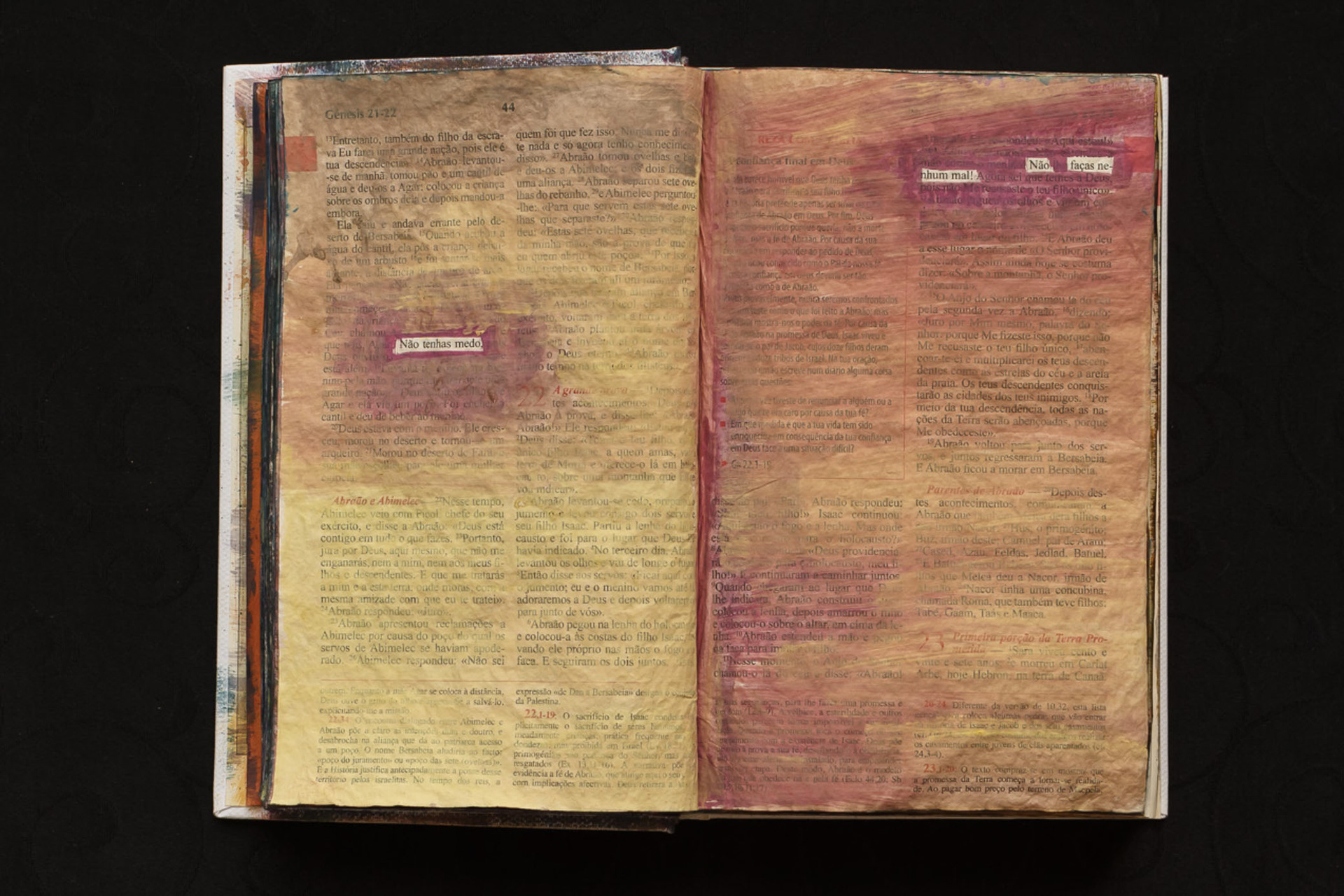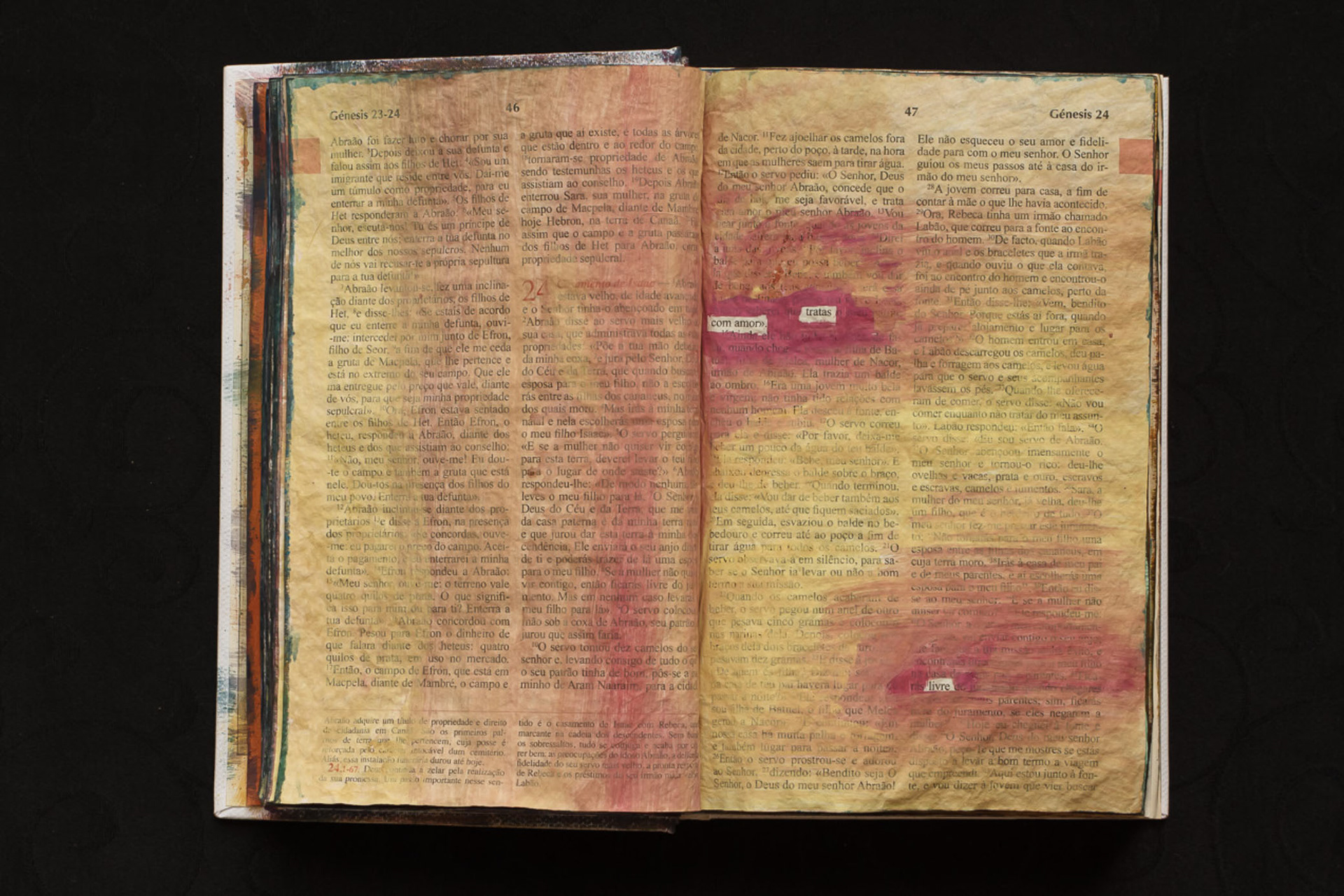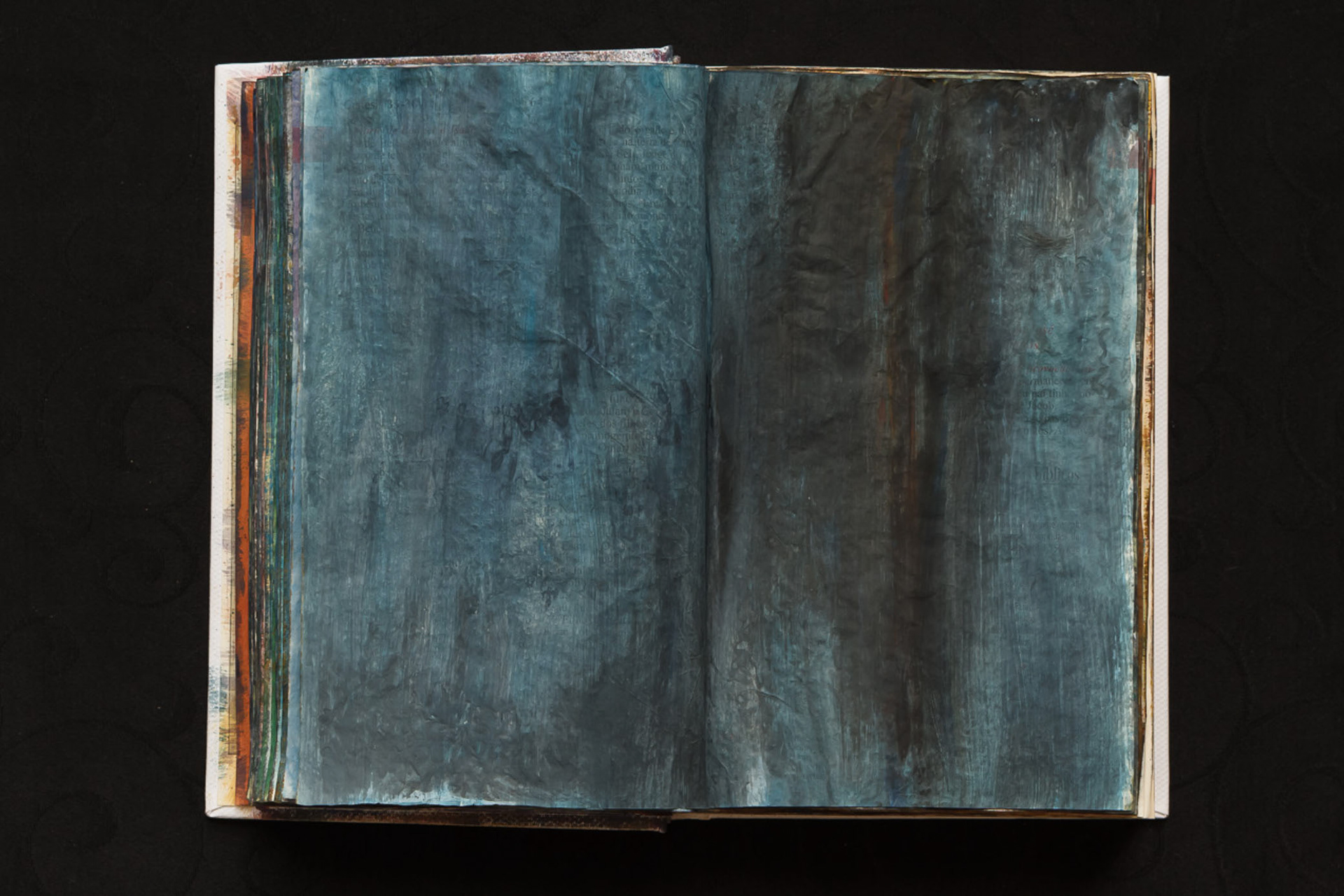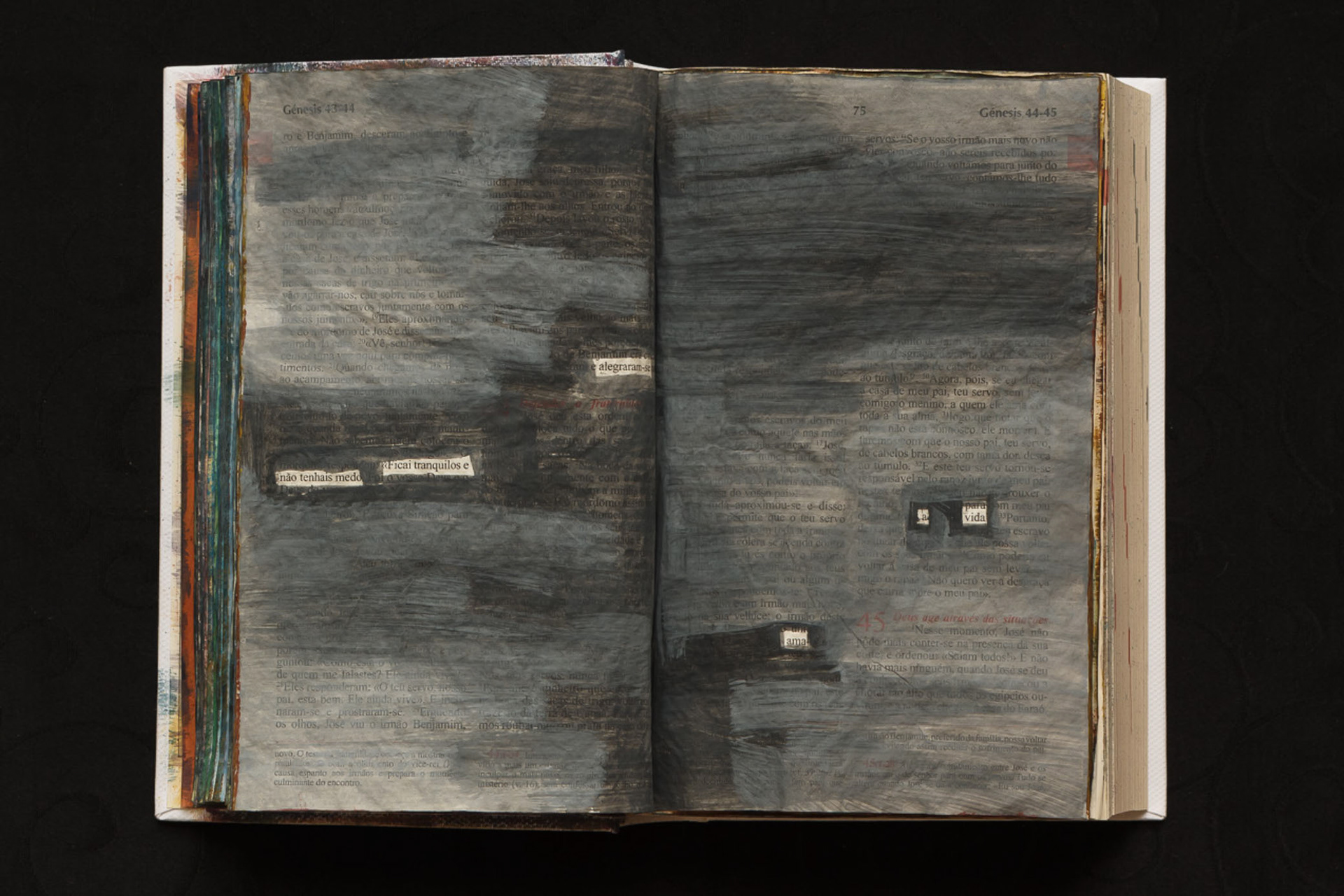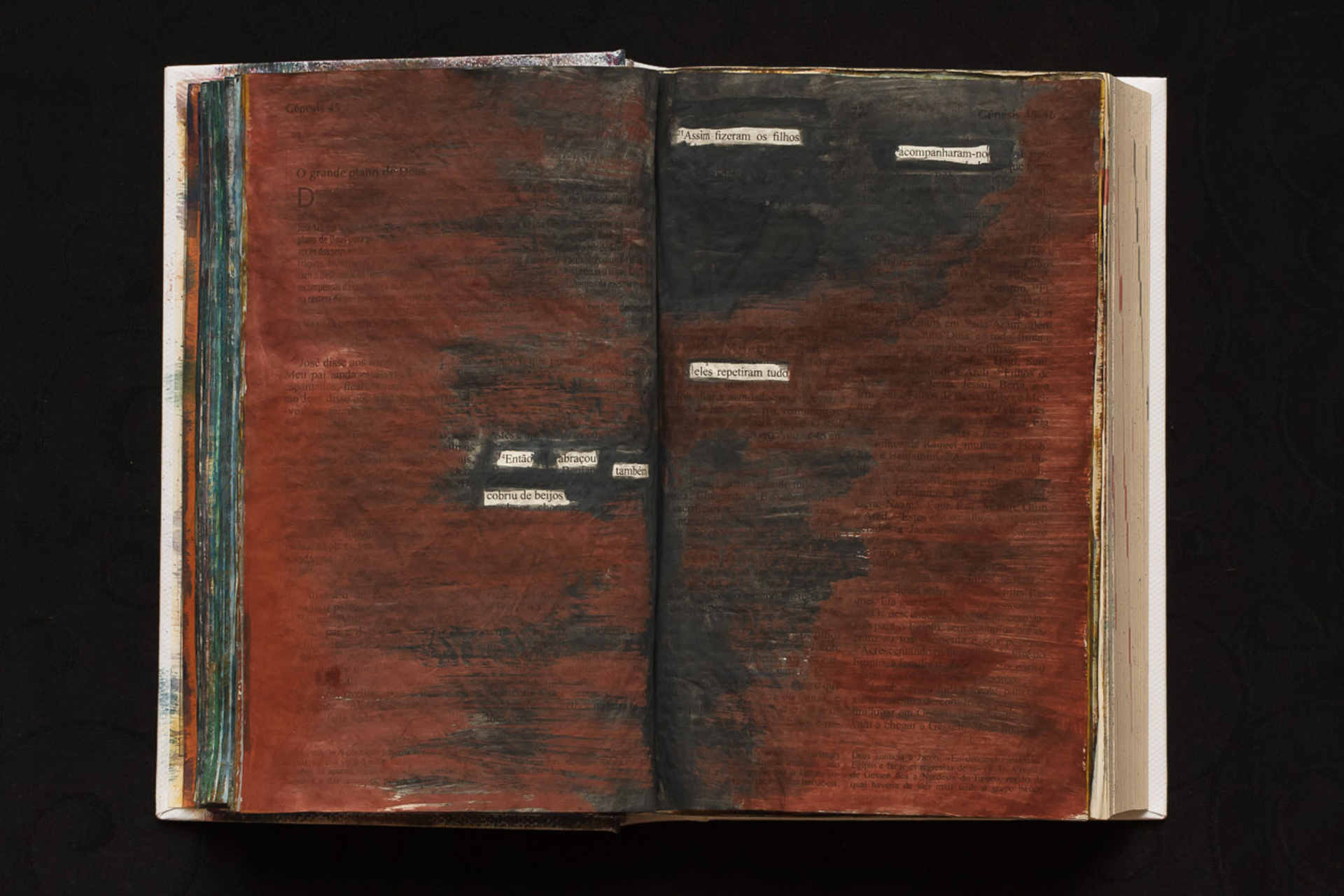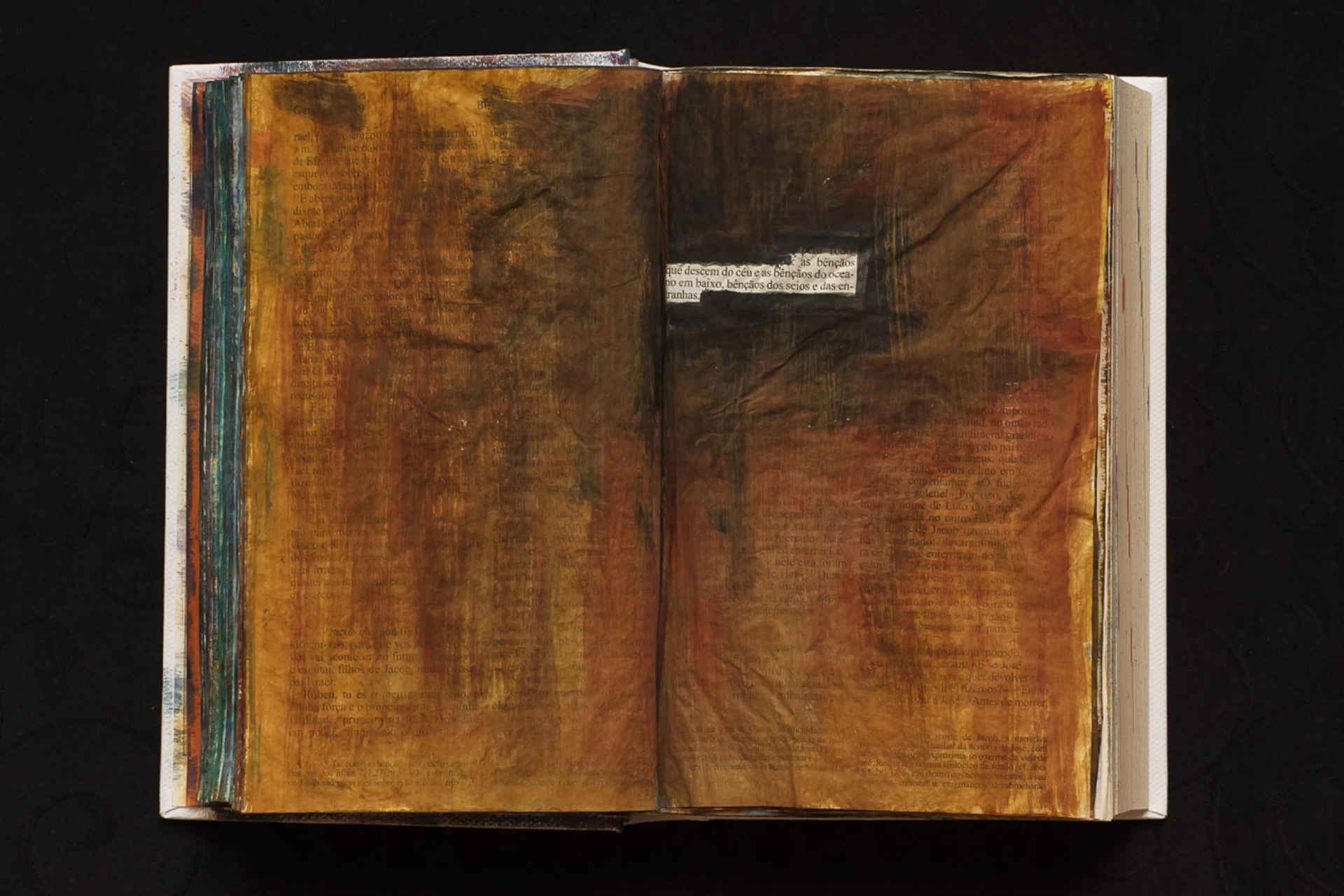"Genesis" | Gouache on Bible | 14 × 22 cm, 86 pages | 2015
(EN) The book of Genesis was modified through the use of gouache paint on Bible paper with the intention of rewriting its history. In an almost intuitive manner, the artist sought, on each page, for phrases that continually brought a new narrative contexts. The ensuing story is a semi-erotic tale built from passages of the Bible itself. It begins by explaining that it is not a book for scholars but for the general public, and promptly expresses the commandment "love" ("ame"). The painted title shifts its meaning in the face of the white brushstrokes covering the "S" in the word "Sagrado," much like removing the "S" from the word "Sacred" could transform it into the word "Pleased."Just as with any other interpretation of biblical texts, from the outset, the book indicates that these are stories modified from the original, interpretations reached within a story focused on desires, pleasures, affections, and love, all while leading the audience to lose themselves in the abstract brushstrokes of the paintings on each page. This is the artist's idealized form of the Bible: a book that primarily emphasizes love and removes from itself all the guilt associated with Judeo-Christian feelings.
(PT) O livro Gênesis foi alterado através do uso de tinta guache sobre o papel da bíblia na intenção de reescrever sua história. De maneira quase intuitiva a artista buscou, em cada página, por frases que continuamente trouxessem um novo contexto narrativo. A história que se seguiu é um conto semi-erótico construído a partir das passagens da própria bíblia. Começa por explicar que o mesmo não se trata de um livro para eruditos, mas sim para o grande público, e logo exprime o mandamento “ame”. Exatamente como acontece com qualquer outra interpretação dos textos bíblicos, desde o início o livro indica que se trata de histórias modificadas a partir do original, trata-se de interpretação alcançada em uma história focada sobre os desejos, prazeres, afetos e amor enquanto leva o público a se perder nas abstratas pinceladas das pinturas de cada página. O título pintado muda de significado diante das pinceladas brancas que cobrem o "S" na palavra "Sagrada", nos trazendo novo título, chamado "Agrada". Esta é a forma idealizada pela artista para a Bíblia: um livro que indica prioritariamente o amor e desloca de si todo sentimento de culpa agregada aos sentimentos judaico-cristãos.






















